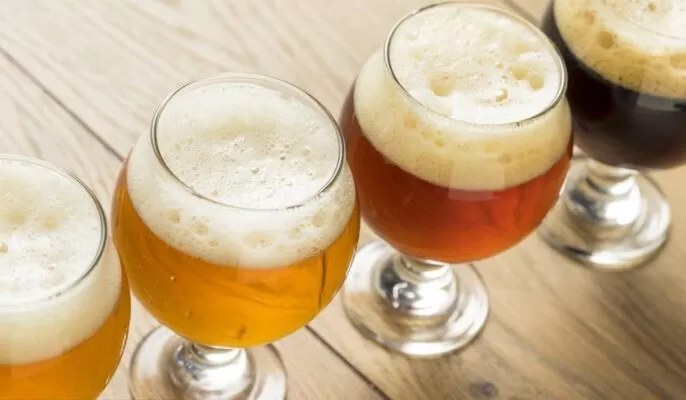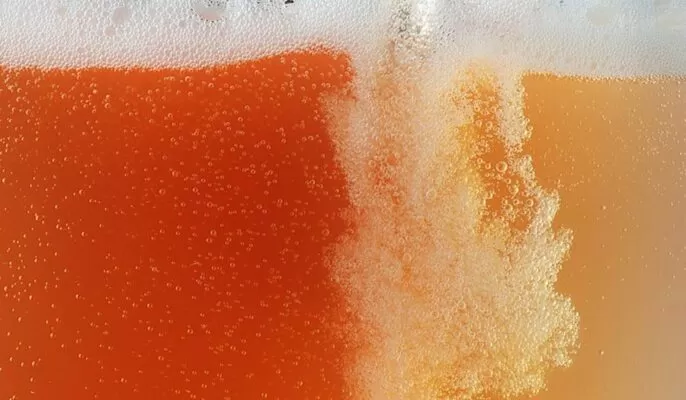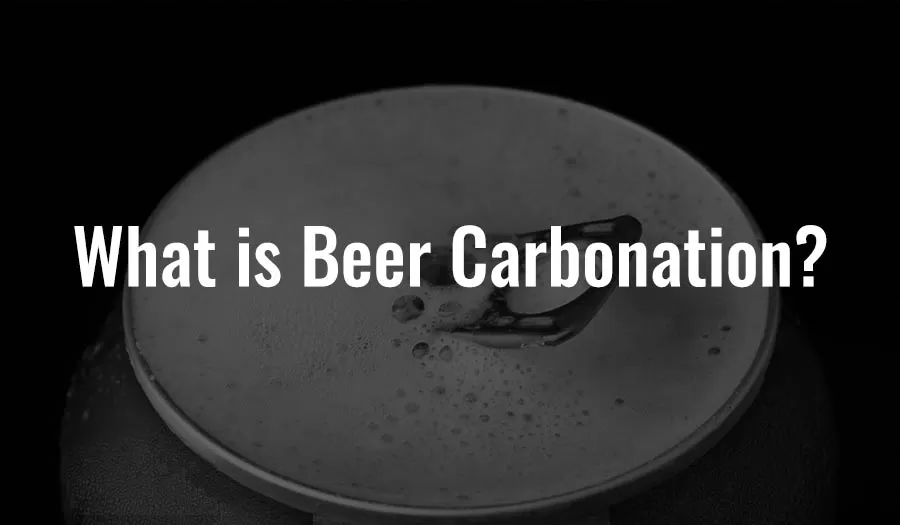Whether it’s the crisp, sharp carbonation of a pilsner or the soft, creamy bubbles of a stout, carbonation is the defining texture of any beer style. The effects of carbonation influence the taste, flavor, aroma, and appearance of beer. Beer without carbonation is considered lifeless. Because yeast produces carbon dioxide and alcohol when they eat sugar. Adding a specific amount of sugar to the yeast before bottling produces the desired amount of carbonation. This article will explain what beer carbonation is and how to store carbonated beer.
What is carbonation?
Carbonation is carbon dioxide gas in a liquid. To keep the carbon dioxide gas in the liquid, there needs to be pressure. For beer, this pressure is the sealed bottle cap or label. When the pressure is released, the carbon dioxide rises to escape in the form of bubbles or carbonation.
All beers are carbonated during the brewing process, which is done in two ways: natural carbonation and forced carbonation.

What is Natural Carbonation?
Natural carbonation is the result of the fermentation process. Fermentation produces alcohol and carbon dioxide as yeast digest the sugars in the wort. Although most of the carbon dioxide escapes during fermentation, brewers seal the beer in containers when it’s almost done. This is how beer is carbonated using natural carbonation in cuve de fermentation and barrels in breweries.
Another way of natural carbonation is in the bottle. In this case the beer can be fermented. It is unfiltered, leaving the active yeast suspended in it. A small amount of sugar is then added at bottling. Once the bottle is sealed and the yeast begins to work on the sugar, carbon dioxide is released and absorbed by the beer.
What is forced carbonation?
Beer must be completely sealed with a tight cap to maintain carbonation. The tight-fitting cap ensures that no carbon dioxide escapes until the beer is opened. Once the beer is opened, it should be drunk within a few hours. If this time is exceeded, the taste of beer will be very different from what you imagined. Carbonation can also flatten or disappear completely, making it unpleasant.
Why is beer carbonated?
The beer is carbonated, giving it a unique flavor and texture. When the carbon dioxide bubbles burst, they release a pleasant aroma that adds to the flavor of the beer. Carbonation also helps bring out the natural flavors of the hops and malt used in beer brewing. For guests who don’t like bitter taste, can make beer more delicious.
Carbonation also helps keep the beer stable over time. for sale and consumption by people all over the world.
How is beer carbonated?
In most cases, breweries will add more carbon dioxide to the beer to increase carbonation and create the desired amount of fizz. This is done with what’s known as a forced carbonation system, which pumps carbon dioxide into the beer under pressure. The higher the pressure, the smaller and more many the bubbles.
Breweries may also use natural carbonation processes, harnessing the power of wild yeast. This process is used for Belgian lambic or bottled beer, where yeast is added to the beer and fermented in airtight containers.
How to store carbonated beer?
The shelf life of carbonated beer depends on the type of beer and how it is stored. Aside from factors like temperature and beer type, it’s also crucial to know how to store beer according to the container to ensure it stays fresh. Beer does not like light, so it should be packaged in dark bottles and stored in a cool, dark place. If the beer is served in kegs or tanks, sunlight cannot penetrate and your beer will not be exposed to glare. If you’re looking for long-term storage options, then a temperature-controlled beer refrigerator is the way to go.
When drinking fizzy beer, it’s important to pour and in stages. This will help the beer retain its carbonation and prevent foam from overflowing the glass. It is also often recommended to pour it into a pint glass bottle that has been chilled to get the most out of the carbon dioxide bubbles.
It’s important to note that beer’s carbonation only peaks within a few weeks of bottling. Afterwards, the bubbles will begin to dissipate, and the flavor of the beer may change over time. So best enjoyed at your favorite time, while they’re still fizzy and fresh.

Carbonated Beer FAQ
When was beer first carbonated?
Beer has been carbonated for centuries, and over the years brewers have used various methods to introduce bubbles to their beer. The first use of artificial carbonation came in the late 1800s, when scientists began looking for ways to infuse beer with carbon dioxide.
Are all beers carbonated?
All beers are carbonated as they leave the brewery, but the details of how this is achieved vary. There are two methods, natural carbonation and forced carbonation, both use pressure to seal the beer and carbon dioxide together. As a result, gas is absorbed into the beer, creating the signature fizz.
Will cold pressing leave enough yeast to carbonate my beer?
Yes. Cold ground beer will still produce carbonates. If you can afford it and prefer a clearer packaged beer, don’t worry, there’s still plenty of yeast in the suspension that can consume the starter sugars and produce carbon dioxide. If the beer you’re drinking isn’t carbonated, it could be due to a bad seal or a bit cold. Some people feel that the carbonation of the beer also takes longer.
Puis-je mettre en bouteille une bière longuement vieillie ?
If you’re concerned, which I’ve never been, you can always toss in some more yeast while racking the beer from fermentation tank to bottling bucket, try to make sure it’s well homogenized before packaging. people having success with anywhere from half a pack of dry yeast to a full pack of liquid, but I’ve never done this, so do your research if choose to.




